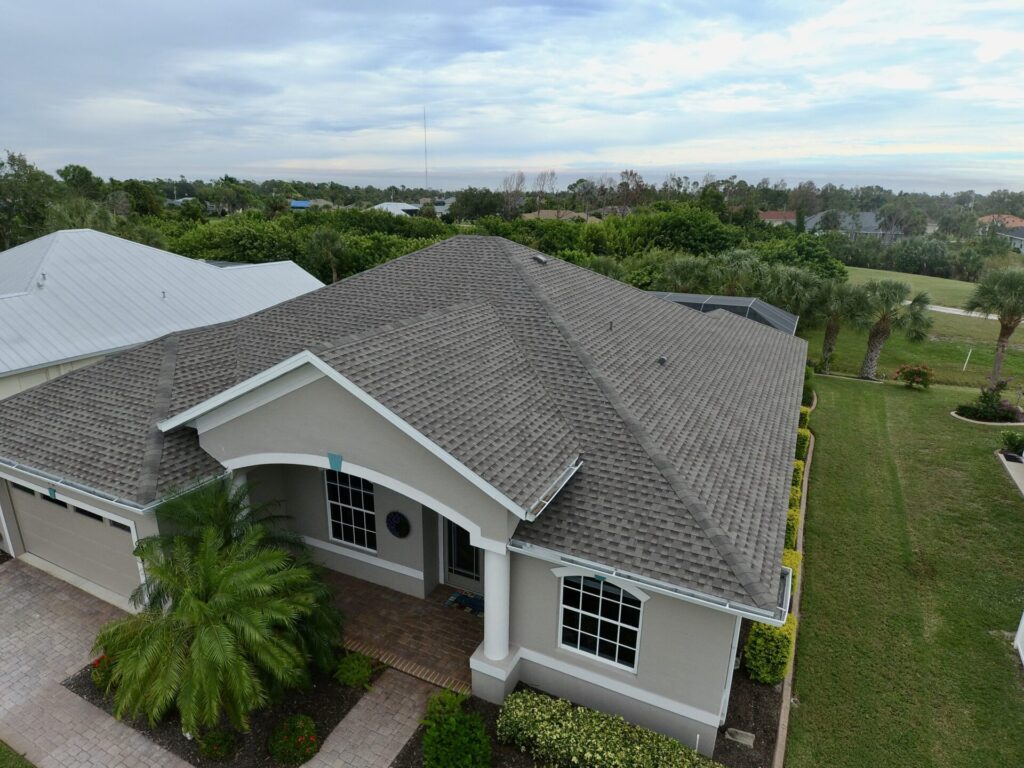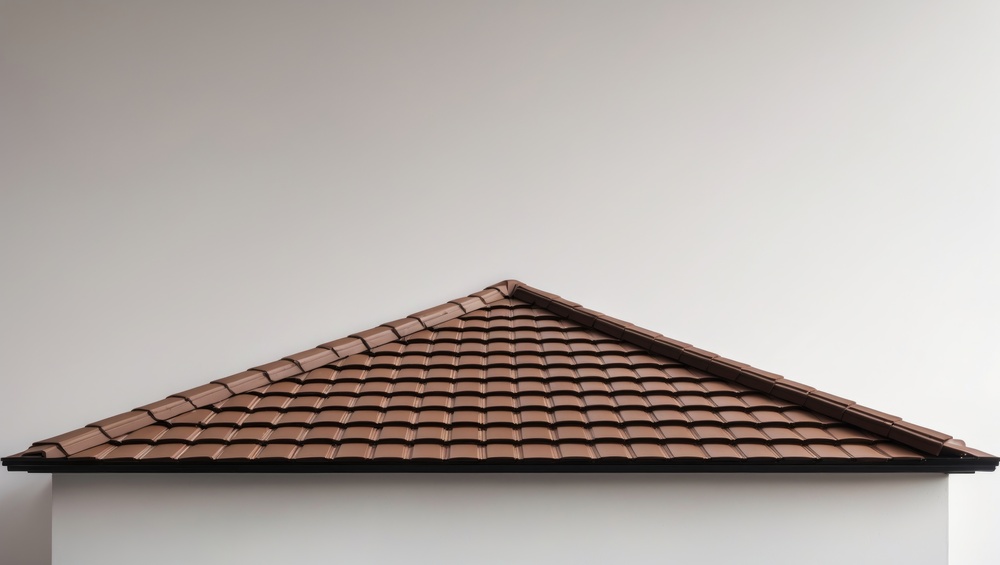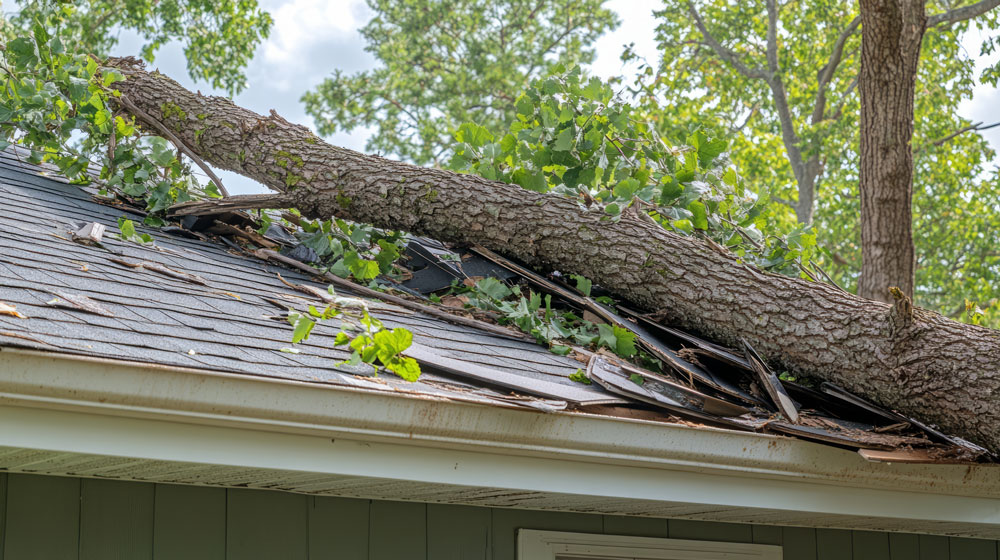Worried about whether your roof can survive another hurricane? You’re not alone—storm protection and durability are top concerns for Englewood homeowners, and your roof is your home’s first line of defense.
Your roof isn’t just a shield against the elements; it’s a long-term investment. But not all roofs are created equal. The type of material, the quality of installation, and the local climate can drastically impact its lifespan.
If you want your roof to go the distance, it’s time to get serious about regular inspections, proper ventilation, and the right materials.
Key Takeaways
- Get your roof inspected yearly, clean your gutters regularly, and trim back overhanging branches to prevent storm damage.
- Your roof’s lifespan depends on materials, weather, and installation quality—better materials and good installation last longer.
- A professional roof inspection helps catch damage early and gives tips to make your roof last longer.
3 Ways You Can Extend the Life of Your Roof
Living in Englewood means your roof takes a serious beating from storms. A well-maintained roof here typically lasts 15 to 30 years, but without regular care, that number drops fast. Here’s what you need to do to protect your roof and make sure it holds up when the next storm hits:
1. Avoid Costly Repairs with Annual Inspections
Annual inspections catch small problems before they turn into disasters. Have a local professional in Englewood, familiar with the area’s weather challenges, check for the following:
- Loose or missing shingles – Cracks, curling, or missing shingles are entry points for water. Fix them before water starts damaging your home.
- Leaks or water damage – Look for water stains on your ceilings or mold in the attic. Catching a leak early keeps your home’s structure safe and your wallet intact.
- Structural integrity – If you see sagging spots or damaged supports, it’s a warning sign. You don’t want your roof collapsing in the next storm.
- Flashing around roof openings – Rust, cracks, or loose seals around chimneys, vents, and skylights let water in. Tighten things up to keep your home dry.
- Mold, algae, or rot – Dark spots or growth on shingles mean moisture is building up. Stop the rot before it eats away at your roof.
- Roof valleys – Debris and misaligned shingles in roof valleys are red flags. Valleys collect water, making them a prime spot for leaks.
- Post-storm checks – After every storm, look for hail dents, cracks, or damage from wind. A little storm damage ignored today can mean big repairs tomorrow.
2. Get Regular Gutter Cleanings
Your gutters do more than you think. When they’re clogged, water builds up and causes mold, rot, and even structural damage. Here’s how to keep them working right:
- Clean them twice a year – Spring and fall are the best times. Clear out the debris that piles up.
- Use a sturdy ladder – Make sure your ladder is stable and safe. Falling off isn’t part of the plan.
- Remove debris by hand – Leaves and twigs? Grab them and toss them. It’s the only way to get a proper clean.
- Flush with a hose – Run water through the gutters to clear out the small stuff and make sure everything flows.
- Install gutter guards – These cut down how often you need to clean. Less work, more protection.
- Check for leaks or damage – While you’re up there, look for cracks or loose spots. Fix them before they turn into bigger issues.
3. Schedule Overhanging Branch Trimming
Overhanging branches are trouble waiting to happen. In a storm in Englewood, they can break and slam into your roof, causing serious damage. Trimming them regularly keeps your roof safe.
Branches also drop leaves and debris onto your roof, which leads to moisture buildup and rot. Keeping them trimmed back helps avoid this.
If the branches are large or high up, call a pro. They’ve got the right tools and know-how to trim safely, without risking damage to your roof—or you.
Factors That Affect How Long a Roof Should Last
How long your roof lasts depends on a few key things: the materials you choose, the weather it faces, and how well it’s installed.
Roofing Materials
The type of roofing material you choose plays a big role in how long your roof lasts. Here’s a quick rundown of common materials and their expected lifespans:
- Asphalt Shingles – Popular and affordable, but don’t expect them to last forever. You’ll get 15 to 20 years out of them.
- Metal Roofs – Built tough, these can handle extreme weather and stick around for 40 to 70 years.
- Clay Tiles – These are durable and ideal for homes with a Mediterranean or Spanish vibe. They’ll last 50 to 100 years.
- Slate Roofs – Classic, long-lasting, and perfect for historic or luxury homes. A slate roof can hold up to 75 to 200 years.
- Wood Roofs – Eco-friendly with a natural look, but they need good care. Expect 25 to 30 years if maintained properly.
Weather Conditions
The weather in your area has a big impact on how long your roof lasts. Here’s what you need to watch out for in Englewood:
- Frequent Hail – Hailstorms chip, dent, and crack your roof, slowly wearing it down. If you live in a hail-prone area, expect more frequent repairs and inspections.
- Extreme Heat – Hot climates can cause asphalt shingles to crack, curl, or warp. UV rays also speed up material degradation, shortening your roof’s lifespan.
- Cold Climates – Temperature changes cause roofing materials to expand and contract, leading to cracks. Ice dams can form and cause leaks if snow isn’t managed properly.
- Humid Areas – Humidity invites mold, algae, and moss, which weaken your roof over time. Moisture can seep into cracks, causing rot and water damage. Regular cleaning and algae-resistant shingles help prevent this.
Installation Quality
A roof’s lifespan depends a lot on how well it’s installed. Poor installation can lead to leaks, sagging, and early wear. That’s why hiring skilled, experienced contractors in Englewood is essential.
Key factors include proper ventilation, correct shingle alignment, and securely fastened materials. These steps are what make your roof last longer.
In short, good workmanship matters. A well-installed roof saves you from bigger problems down the road.
Find Out Your Roof’s Life with a Pro Inspection
Englewood’s weather won’t wait. Don’t leave your roof’s protection to chance—contact Galloway Roofing today at 941-697-3737 for a free consultation. Let us provide you with clear, expert advice. Schedule a detailed roof inspection, and we’ll assess any damage, offer practical tips, and help you extend your roof’s life.





